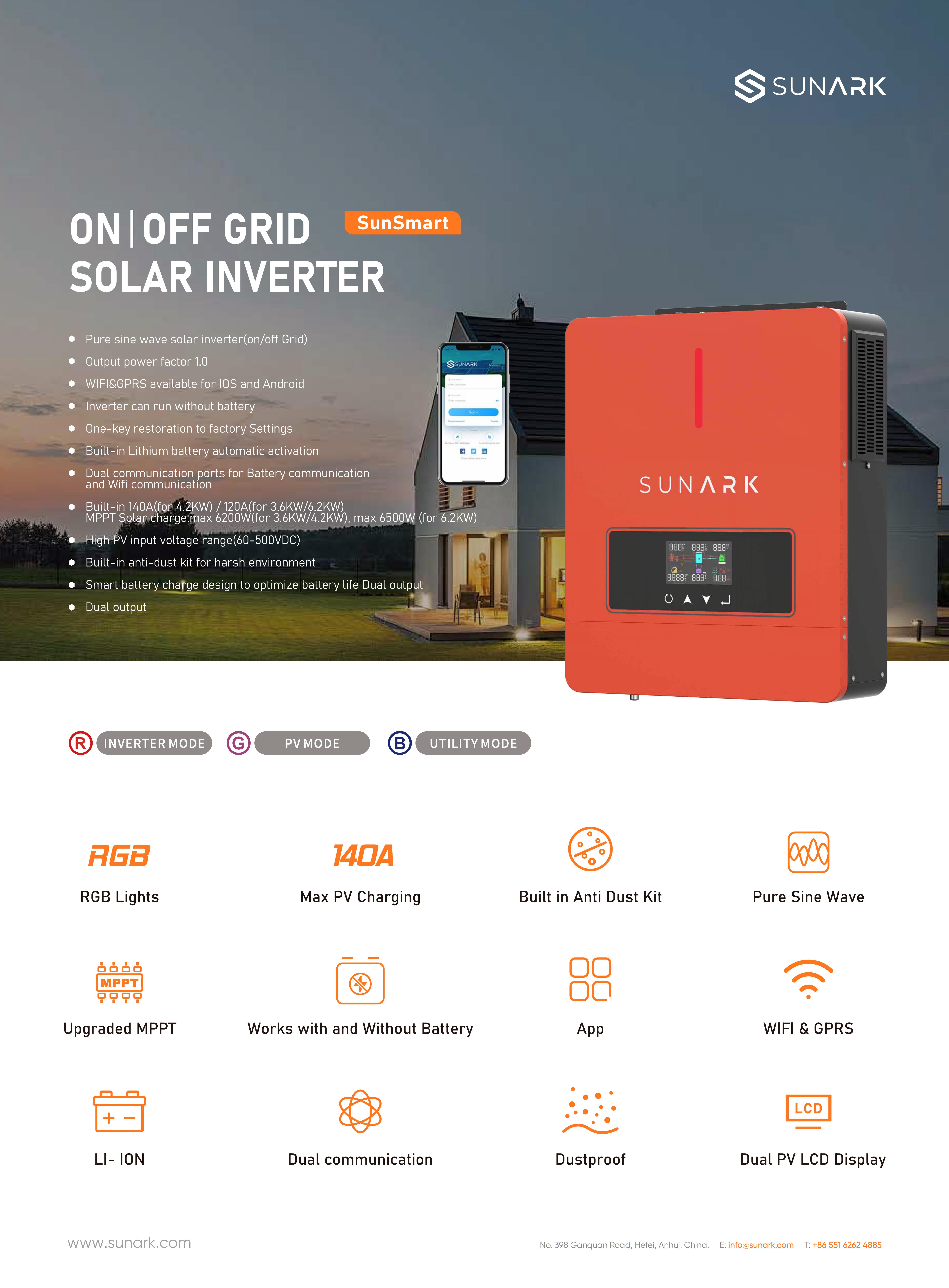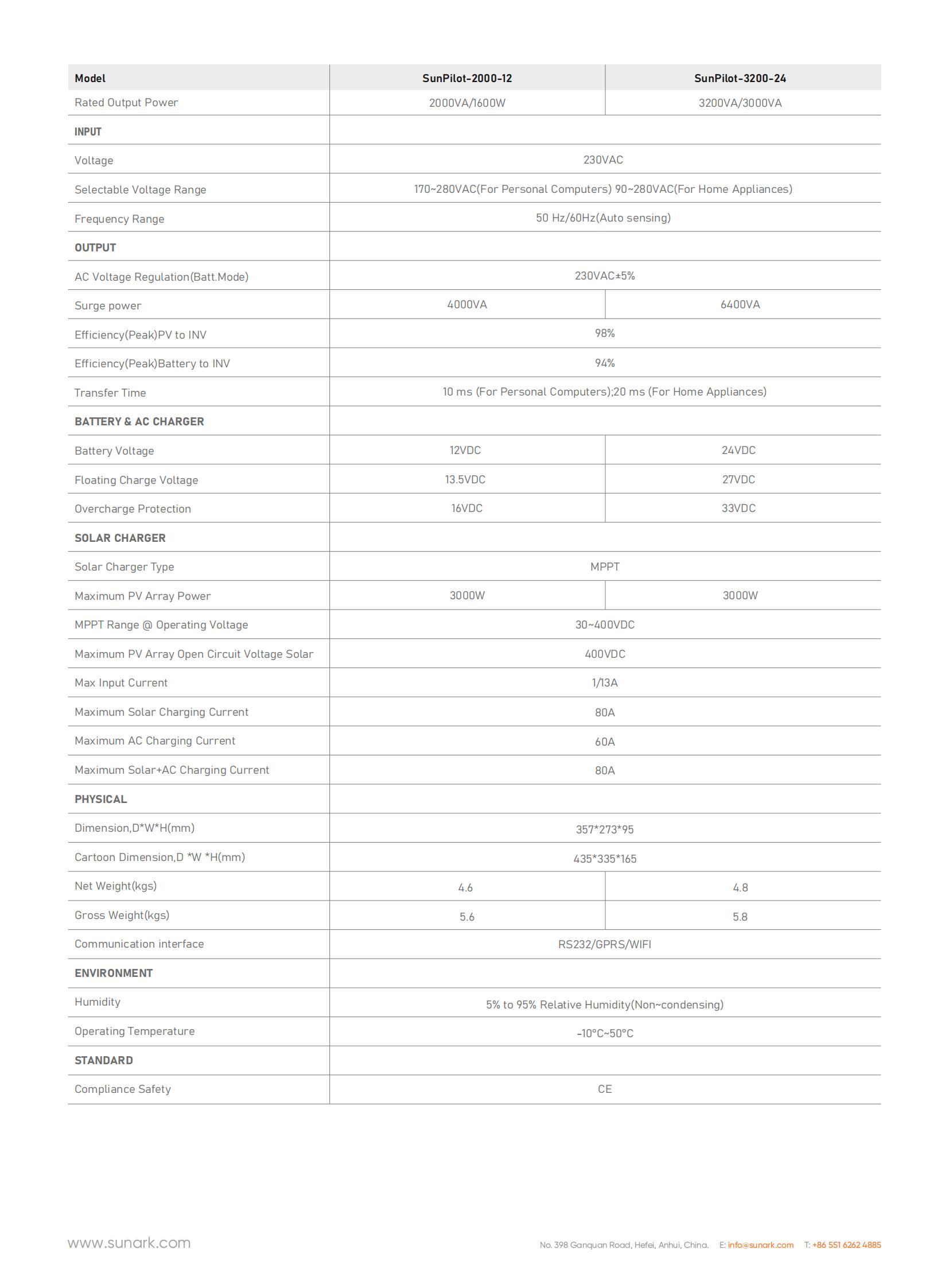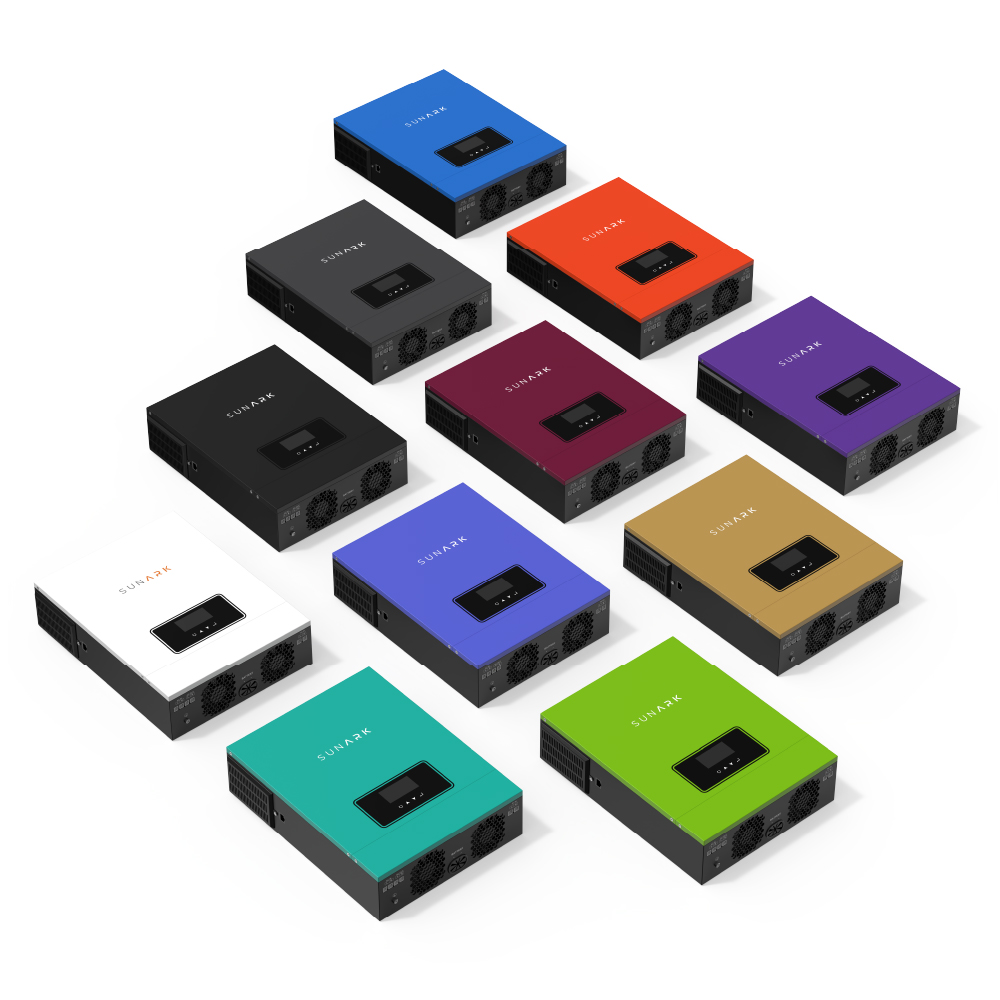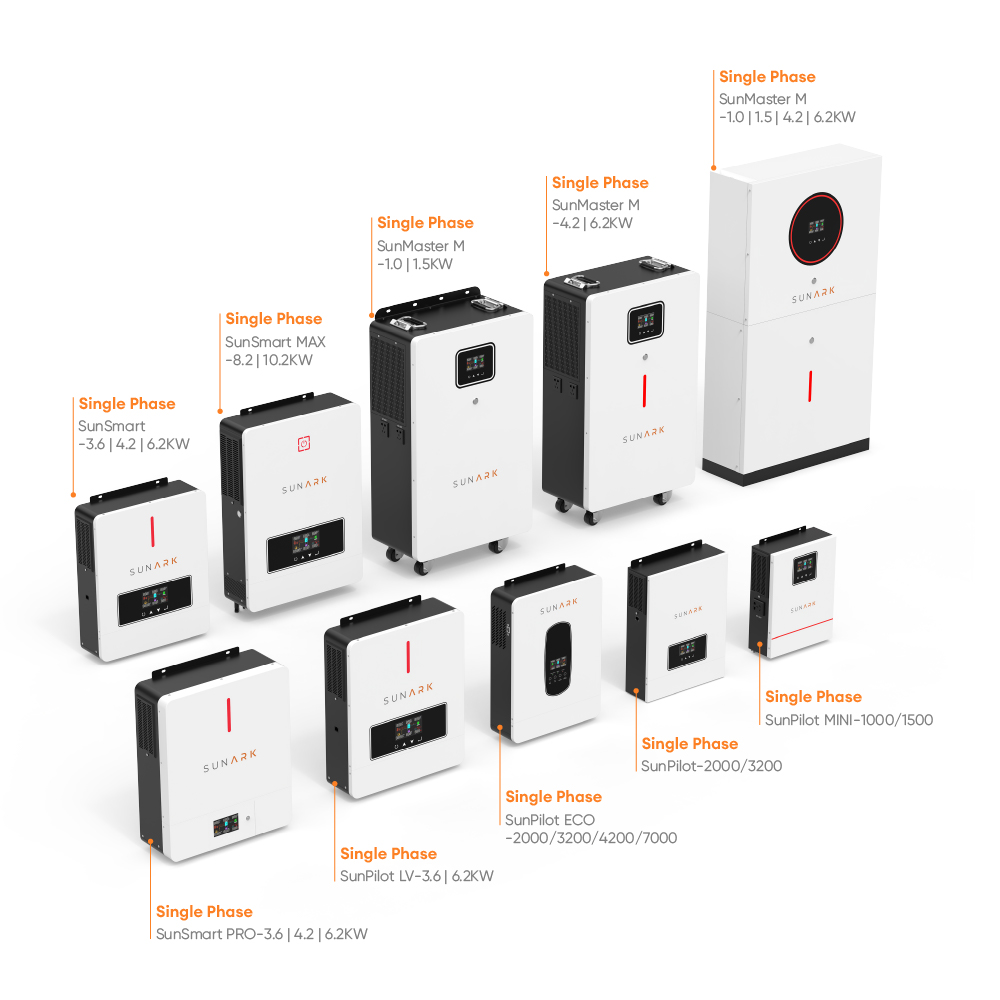A hybrid inverter combines the functionality of a traditional grid-tied inverter and a battery-based off-grid inverter. It allows you to connect your solar panels to the grid and also store excess energy in batteries for use during periods of low solar generation or during a power outage. Hybrid inverters are commonly used in residential and commercial solar installations to increase self-consumption and energy independence.
Brand:
SunArkBrand:
SunArkModel name:
SunPilot-3200-24Max PV power:
3000WMPPT voltage range:
30~400VDCRated output power:
3200VAOutput voltage:
230VAC±5%The datasheet of SunArk SunPilot series 3200VA at below:


Different colors for option:

A hybrid solar inverter is an advanced type of inverter that combines the functionalities of a traditional solar inverter and a battery inverter. Its primary function is to manage and optimize the flow of electricity between solar panels, batteries, and the electrical grid in a hybrid solar power system.
The main functions of a hybrid solar inverter include:
Solar Power Conversion: The hybrid solar inverter converts the DC (direct current) electricity produced by solar panels into AC (alternating current) electricity that can be used to power household appliances and feed into the electrical grid.
Battery Charging: In a hybrid solar system, excess solar energy not immediately consumed is stored in batteries. The hybrid inverter manages the charging of the batteries by regulating the amount of energy from the solar panels that goes into charging the batteries.
Battery Discharging: When electricity is needed after sunset or during a power outage, the hybrid inverter allows the stored energy in the batteries to be converted back into AC electricity and used to power the household appliances. It seamlessly switches between grid power, battery power, and solar power based on the availability and demand for electricity.
Grid Interaction and Net Metering: In hybrid solar systems, the excess solar power produced during the day can be fed back into the electrical grid, and the hybrid inverter manages the interaction between the grid and the solar system. It enables net metering, where any excess electricity generated is exported to the grid, and the owner receives credits or reduced electricity bills.
Load Shifting and Energy Management: The hybrid inverter optimizes the use of solar energy and battery storage based on various factors such as energy demand, time of day, battery charge level, and electricity tariff rates. It intelligently manages the flow of electricity to prioritize using solar power and stored energy whenever possible, reducing reliance on grid electricity and optimizing energy consumption.
Monitoring and Control: Hybrid solar inverters often include monitoring and control features that allow users to monitor the performance of the solar system, battery status, energy production, and consumption. Some inverters also offer remote monitoring and control capabilities through smartphone apps or online platforms.
Overall, the function of a hybrid solar inverter is to efficiently integrate solar power, battery storage, and grid electricity to maximize energy self-consumption, load flexibility, and overall system efficiency in a hybrid solar power system.

In a solar system, a hybrid inverter plays a crucial role in managing the flow of electricity between the solar panels, batteries, and the electrical grid. Here's how a hybrid inverter typically works in a solar system:
Solar Power Conversion: The hybrid inverter receives the DC electricity produced by the solar panels and converts it into usable AC electricity. This process is called inversion. The inverter ensures that the AC electricity generated matches the requirements of the appliances and electrical loads in the house.
Energy Consumption: The hybrid inverter prioritizes the use of solar electricity to power the household appliances and meet the immediate energy demand. It will direct the solar power to the loads within the house, reducing or eliminating the need to draw electricity from the grid.
Battery Charging: If there is excess solar power that is not immediately consumed, the hybrid inverter manages the charging of the batteries. It regulates the amount of energy directed from the solar panels to the batteries to ensure optimal charging without overcharging.
Battery Discharging: When electricity is required at a time when solar energy is not available, such as during nighttime or a power outage, the hybrid inverter draws electricity from the batteries. It converts the DC electricity stored in the batteries back into AC electricity, allowing it to power the household appliances.
Grid Interaction: In a hybrid solar system, the hybrid inverter enables interaction with the electrical grid. If there is surplus solar energy that cannot be immediately consumed or stored in the batteries, the inverter can feed the excess electricity back into the grid. This allows the homeowner to earn credits for the excess energy produced, usually through a net metering arrangement.
Monitoring and Control: Hybrid inverters often include monitoring and control features that provide real-time data on energy production, consumption, battery status, and system performance. Users can monitor their system's performance, adjust settings, and access historical data to optimize energy usage.
Seamless Switching: The hybrid inverter ensures seamless and automatic switching between different power sources. It can monitor the energy availability, prioritize the use of solar power and battery storage, and switch to drawing electricity from the grid when necessary. The transition between power sources is typically smooth and uninterrupted.
Overall, the hybrid inverter acts as the central hub of a solar system, managing the conversion, consumption, storage, and distribution of electricity to maximize energy efficiency and self-sufficiency. It optimizes the use of solar power, harnesses energy from the grid, and efficiently charges and discharges the batteries, providing a reliable and cost-effective electricity supply for the.